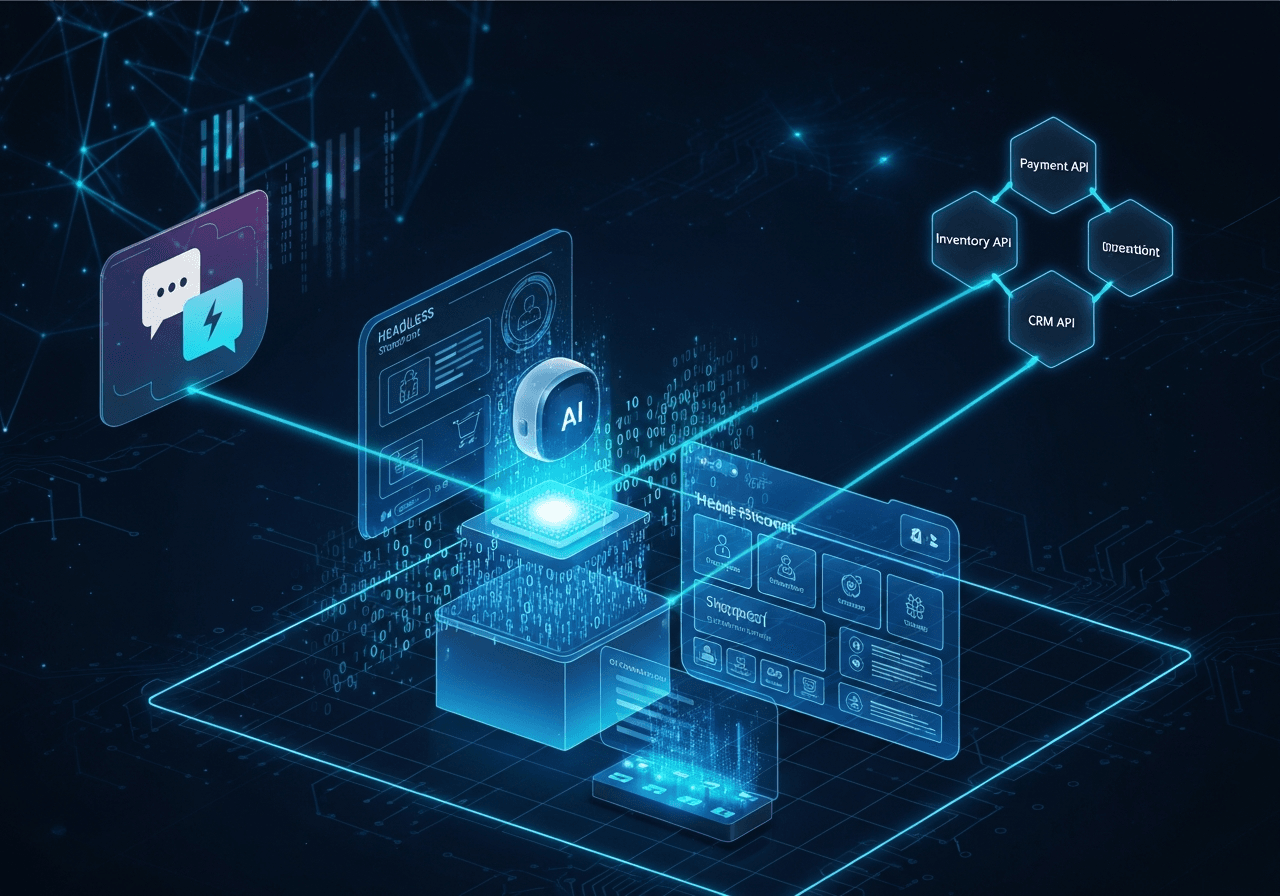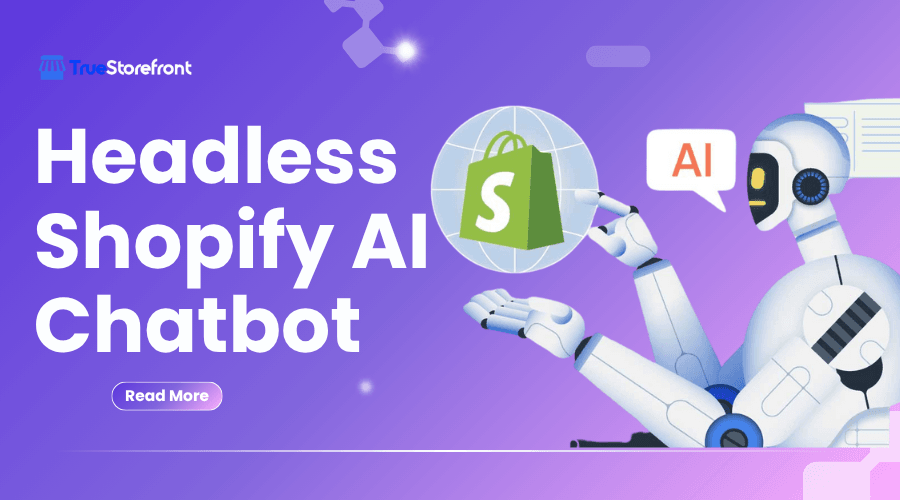Headless commerce is rapidly becoming the preferred approach for modern ecommerce brands seeking speed, flexibility, and a custom frontend experience. As more merchants adopt Shopify Headless, AI-powered customer support tools especially chatbots are emerging as essential components in delivering scalable, intelligent, and real-time customer service.
This guide explores how AI chatbots enhance Shopify Headless environments, how they integrate through APIs, which tools work best, and the strategies to optimize customer support across an omnichannel ecosystem.
I. Why AI Chatbots Matter in Shopify Headless

1.1 Maximum Flexibility with a Decoupled Architecture
Shopify Headless separates the frontend from the backend, allowing brands to build experiences using technologies like React, Vue, Next.js, or Remix. This open architecture also creates ideal conditions for integrating AI chatbots via APIs, SDKs, or webhooks without limitations imposed by traditional Shopify themes.
1.2 Automated Customer Support 24/7
Modern AI chatbots can:
- Provide personalized product recommendations
- Answer support questions instantly
- Resolve order inquiries
- Assist with payments, shipping, and returns
- Handle multilingual conversations
This automation reduces operational workload while improving overall customer satisfaction.
1.3 Higher Conversions Through Personalization
A headless approach allows tracking customer behavior across every interface from mobile apps to PWAs to social commerce. When paired with AI, these insights enable ultra-personalized recommendations, boosting conversion rates across the entire journey.
II. How AI Chatbots Work Within Shopify Headless
2.1 API-Driven Interactions
Because the frontend is decoupled, chatbots communicate directly with Shopify using APIs to:
- Retrieve product data
- Check inventory levels
- Process orders
- Manage customer details
- Deliver real-time responses
Most AI chatbot platforms support REST and GraphQL, plus webhooks for live updates.
2.2 Frontend Integration Options
Chatbots can be integrated into the headless frontend via:
- Embedded script snippets
- Custom React components
- Headless chat widgets
- Direct API communication
Brands can fully customize chatbot UI and placement, ensuring consistency with their headless design system.
2.3 Natural Conversational Experience Through Streaming AI
Modern models support streaming responses, enabling fluid, human-like conversations. This capability is extremely valuable for brands offering detailed product support or high-touch customer interactions.
III. Best AI Chatbots and Support Tools for Shopify Headless

3.1 Gorgias AI
A top support platform in the Shopify ecosystem.
Key benefits
- Automated ticket classification
- AI-generated reply suggestions
- Order management through chat
- Multi-channel support including social media
Strengths
- Strong API support
- Comprehensive automation
- Single dashboard for all customer messages
Weaknesses
- Pricing increases quickly with ticket volume
3.2 Tidio AI Chatbot
A great option for mid-sized stores focused on sales and conversion.
Highlights
- AI recommendation engine
- Multi-language support
- Behavior-based triggers
3.3 Intercom with AI Resolution Bot
Powerful automation ideal for SaaS-style or technical products.
Benefits
- Handles 30 to 50 percent of common queries
- Integrates via API to fetch Shopify order data
- Automated onboarding and guided flows
3.4 Zendesk AI
Perfect for enterprises needing deep analytics.
Features
- Sentiment analysis
- Automated email replies
- Omnichannel workflows
IV. How to Integrate AI Chatbots into Shopify Headless
Step 1. Map the Customer Journey
Identify where customers interact: Web App, Mobile App, Landing Pages, or Social Commerce.
Step 2. Choose an AI Platform Suited for Headless
Evaluate based on:
- API capabilities
- Performance and response time
- Frontend compatibility
- Scalability
Step 3. Configure API Connections
Typical integrations include:
- Shopify Storefront API
- Shopify Admin API
- Webhooks for orders, inventory, and customer events
Step 4. Customize the Chatbot UI
With full control over the frontend, you can:
- Match brand colors and styles
- Build a custom chat launcher
- Ensure responsive mobile performance
- Embed chat in navigation or floating widgets
Step 5. Build AI Conversation Flows
Core flows include:
- Product guidance
- Order tracking
- Return policies
- Size and fit recommendations
- Payment support
Step 6. Run A/B Testing
Test for:
- Widget load times
- AI response accuracy
- User engagement across different interfaces
V. Benefits of Using AI Chatbots in Shopify Headless

Instant Response Time: AI chatbots provide quick answers to customer questions, ensuring users receive support immediately. This matches the fast performance of headless storefronts and keeps the customer experience smooth across all channels.
Lower Operational Costs: By automating common support tasks such as order checks or product FAQs, AI reduces the workload for customer service teams. This helps businesses cut operational costs significantly while maintaining consistent support quality.
Easy Scalability: AI can manage a large number of conversations at the same time without losing performance. It removes the need to hire additional staff during busy periods and allows support operations to grow effortlessly.
Higher Revenue: AI chatbots analyze customer behavior to offer personalized product suggestions. These recommendations increase engagement and improve conversion rates, leading to higher revenue for Shopify Headless stores.
Conclusion
AI chatbots and support tools are becoming essential in the Shopify Headless ecosystem. When integrated correctly, they enhance speed, efficiency, personalization, and customer satisfaction. Headless architecture gives brands the freedom to build a fully customized experience and AI elevates that experience with intelligence and automation.
If you are planning to scale a headless ecommerce experience, now is the perfect time to integrate AI support tools into your strategy.
Find Your Perfect CMS at TrueStorefront to build a smarter and more efficient headless commerce infrastructure.
Read more:
